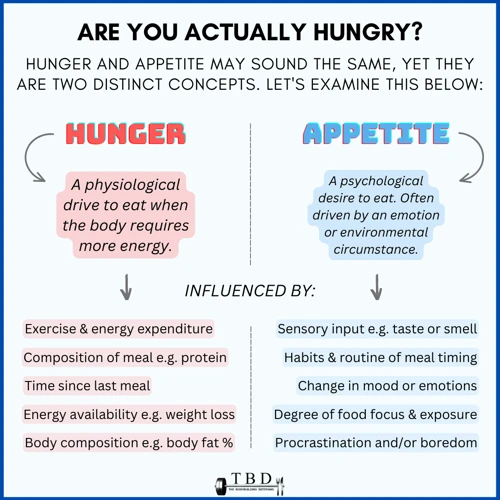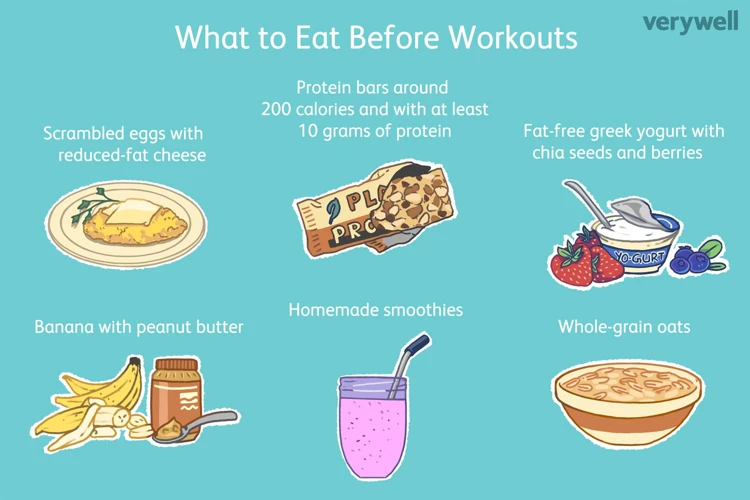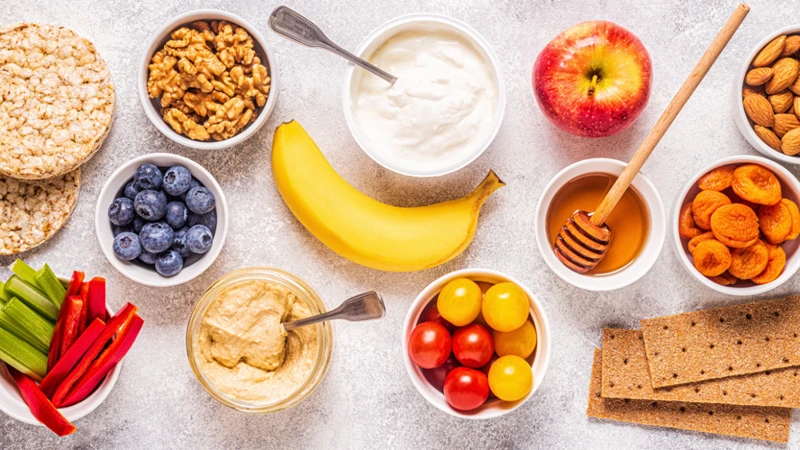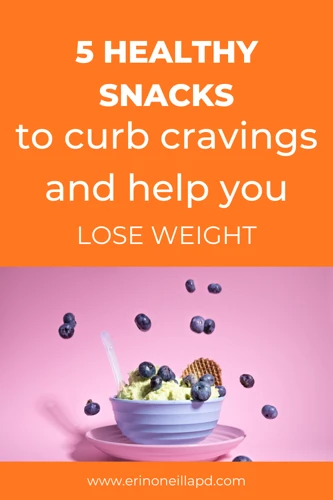Have you ever found yourself mindlessly snacking through an entire bag of chips or a box of cookies? Or maybe you have trouble controlling your cravings for sugary or salty snacks? These common struggles can often sabotage weight loss goals and leave us feeling frustrated and defeated. But what if there was a simple solution? Enter pre-portioning snacks. This method involves dividing snacks into individual servings ahead of time, making it easier to control portion sizes and avoid overeating. But is there actually any science behind this technique? And how exactly do you go about pre-portioning your snacks? In this article, we’ll explore the benefits of pre-portioning for weight loss and provide practical tips for making this strategy work for you.
Understanding Hunger and Cravings

Have you ever found yourself mindlessly snacking, unaware of how much you’ve consumed? Or maybe you find yourself reaching for unhealthy snacks when hunger strikes? Understanding the difference between hunger and cravings is crucial for effective weight loss. Hunger is a physical response to the body’s need for sustenance, while cravings are often the result of emotional or psychological triggers. In this section, we’ll explore the difference between the two and how pre-portioning snacks can help you manage both. For additional tips on portion control, check out these 10 easy portion control tricks.
The Science Behind Pre-Portioning

When it comes to weight loss, portion control is a crucial aspect to keep in mind. The concept of pre-portioning snacks involves measuring and dividing snacks into individual servings ahead of time. This method of controlling portion sizes has been shown to have a significant impact on weight management.
Research has found that individuals tend to consume more food when larger portions are presented to them, regardless of actual hunger levels. In a study conducted by the Cornell Food and Brand Lab, participants were given either a 1-cup or 2-cup portion of snack mix to eat while watching a movie. The results showed that those who received the larger portion size consumed 53% more food than those who received the smaller portion size.
Pre-portioning snacks can help individuals become more aware of their own hunger and satiety levels. When food is readily available and easily accessible, it can be tempting to mindlessly consume more than necessary. However, by measuring out a specific amount of food, individuals are forced to take a moment to consider how hungry they actually are before reaching for another serving.
Pre-portioning can also lead to a habit of controlling food intake, allowing individuals to feel more in control of their eating habits. The practice of measuring out portion sizes can help individuals learn about portion sizes and develop a better understanding of how much food they truly need to feel satisfied.
In addition to helping with weight management, pre-portioning can also save time and money. By measuring out snacks ahead of time, individuals can avoid the temptation to reach for unhealthy, pre-packaged snack options when hunger strikes. Instead, they can simply reach for pre-portioned snacks that are already available.
The science behind pre-portioning is clear: it can help individuals better manage their food intake, be more aware of their hunger and satiety levels, and ultimately, promote weight loss. To learn more about portion control and its importance in weight management, check out our article on the importance of measuring food portions for weight loss.
How to Pre-Portion Snacks

Pre-portioning snacks involves dividing them into appropriate serving sizes that are easy to grab and go. This can be a useful strategy for controlling portions and preventing overeating. Here are some steps to follow when pre-portioning your snacks:
- Choose the right containers: Select containers that are a suitable size for your snacks. Small sandwich bags, portion-control containers or mason jars are all good options.
- Read the label: Check the serving size on the package and ensure your portions match.
- Measure your snacks: Use a food scale or measuring cups to ensure your portions are accurate.
- Divide snacks into individual servings: Use the containers you picked to split the snacks. This will make it easier to grab them when hunger strikes.
- Store pre-portioned snacks in an accessible place: Keep them in the fridge, freezer or pantry, so they are nearby and easy to find when you need them.
By pre-portioning your snacks, you will have a quick and easy way to limit your portions and manage your calorie intake. For even more portion control strategies, check out these 5 portion control hacks. Additionally, using portion control plates has been shown to be an effective tool for weight loss. You can learn more about them by reading this article: Do portion control plates work? Another helpful tip is to include protein-rich foods in your pre-portioned snacks as they can keep you feeling satisfied and full for longer. Read more about this in our article on protein and portion control for weight loss.
Additional Tips for Managing Hunger and Cravings
As beneficial as pre-portioning snacks can be, it is not always enough to manage hunger and cravings. Luckily, there are additional tips that can further aid in weight loss efforts. These tips include eating mindfully, drinking plenty of water, choosing nutrient-dense foods, managing stress, and getting enough sleep. By implementing these practices alongside pre-portioning, individuals can take control of their eating habits and improve their overall health. For example, slowing down while eating can help with portion control. Check out our article on eating slower to control portions for more information.
Eating Mindfully
Eating mindfully is an important aspect of weight loss. By being present and conscious of what and how much we are eating, we can better manage our food intake and avoid overeating. Here are some tips for eating mindfully:
- Pay attention to hunger cues: Before eating, ask yourself if you are really hungry or if you are eating out of boredom or emotional reasons. If you are truly hungry, try to identify what it is that you’re craving.
- Slow down: It takes time for your brain to register that you are full. Slowing down while eating can help you tune in better to your body’s signals and prevent overeating.
- Savor each bite: Take the time to enjoy the flavor and texture of each bite. This can also help you feel more satisfied and prevent the need for seconds.
- Minimize distractions: Try to avoid eating while watching TV or scrolling on your phone. This can lead to mindless eating and make it harder to recognize when you’re full.
- Practice gratitude: Take a moment before eating to reflect on where your food came from and how it nourishes your body. This can help you feel more connected to your food and make it more enjoyable to eat mindfully.
By incorporating these practices into your eating routine, you can better tune in to your body’s signals and avoid overeating.
Drinking Water
Staying hydrated is essential for maintaining a healthy body, particularly when trying to lose weight. Drinking plenty of water can help reduce hunger and cravings by keeping you feeling full and satisfied for longer periods of time. It’s also important to stay hydrated because sometimes we can mistake thirst for hunger and end up consuming unnecessary calories.
Here are some tips for staying hydrated:
- Carry a water bottle with you throughout the day to remind yourself to drink water regularly.
- Flavor your water with slices of lemon, lime or cucumber for a refreshing change.
- Drink a glass of water before every meal to help you feel fuller and eat less.
- If you find plain water boring, try herbal tea or add a splash of fruit juice to your water.
- Avoid sugary drinks and excessive caffeine, as these can dehydrate you and cause cravings for more unhealthy snacks.
How much water should you drink?
The amount of water you need to drink can vary depending on your gender, age, weight, and activity level. As a general rule, aim to drink at least eight 8-ounce glasses of water per day, or roughly two liters. However, some people may need more or less depending on their individual needs. A good way to tell if you’re drinking enough water is to monitor the color of your urine – if it’s pale yellow or clear, you’re likely getting enough fluids. If it’s dark yellow or amber, you need to drink more water.
By keeping yourself adequately hydrated, you can help support your weight-loss goals and improve your overall health. So make sure to drink up!
Choosing Nutrient-Dense Foods
When it comes to managing hunger and cravings, choosing nutrient-dense foods is crucial. These foods provide the body with the necessary nutrients and energy, without overloading it with empty calories. Here are some tips for selecting nutrient-dense foods:
- Include plenty of fresh fruits and vegetables in your diet. These are packed with essential vitamins, minerals, and fiber, which promote satiety and keep you feeling full for longer.
- Opt for lean proteins, such as chicken, fish, turkey, and tofu. These provide the body with essential amino acids, which are important for muscle growth and repair.
- Choose whole grains, such as quinoa, brown rice, and whole wheat bread. These are high in fiber and other nutrients, which help to slow down digestion and promote a feeling of fullness.
- Include healthy fats in your diet, such as nuts, seeds, avocados, and olive oil. These provide the body with essential fatty acids, which are important for brain function and overall health.
- Limit processed and high-calorie foods, such as candy, chips, and sugary drinks. These foods are often high in calories and low in nutrients, which can lead to overeating and weight gain.
Remember, the key to choosing nutrient-dense foods is to focus on foods that provide a lot of nutrition for the calories they contain. By including these foods in your diet, you can help manage hunger and cravings while also supporting your overall health and well-being.
Managing Stress
Managing stress is an important aspect of maintaining a healthy weight. When we’re stressed, our bodies produce cortisol, a hormone that can increase appetite and lead to cravings for comfort foods that are high in sugar and fat. To avoid overeating and weight gain, it’s essential to find healthy ways to manage stress. Here are some tips:
- Exercise: Physical activity is a great way to relieve stress and improve overall health. Whether it’s going for a walk, doing yoga, or lifting weights, finding an activity you enjoy can help you manage stress and reduce cravings.
- Meditation: Practicing mindfulness meditation can help reduce stress and improve focus. It involves focusing on the present moment and letting go of distractions and negative thoughts.
- Breathing exercises: Taking slow, deep breaths can help lower stress levels and reduce cortisol production. Try inhaling deeply through your nose, holding for a few seconds, and exhaling slowly through your mouth.
- Doing something you enjoy: Engaging in activities you enjoy, such as reading, cooking, or spending time with friends and family, can help reduce stress and improve mood.
By incorporating these stress-management techniques into your daily routine, you can help prevent overeating and weight gain caused by stress-induced cravings. Remember that self-care is an essential part of any weight-loss journey.
Getting Enough Sleep
Getting enough sleep is an often overlooked but crucial aspect of weight management. Lack of sleep has been linked to an increased risk of obesity, as well as other health problems. One of the reasons for this is that lack of sleep can disrupt the hormones that control hunger and fullness, making it harder to resist unhealthy snacks.
To make sure you’re getting enough sleep, establish a consistent sleep schedule, going to bed and waking up at the same time each day. This can help regulate your body’s internal clock and promote better sleep quality.
If you have trouble falling asleep, try practicing relaxation techniques, such as deep breathing or meditation, before bed. Avoid using electronics in the hour leading up to bedtime, as the blue light emitted by screens can interfere with your body’s production of the sleep hormone melatonin.
Avoid consuming caffeine or alcohol close to bedtime, as both can disrupt sleep quality. Create a comfortable sleep environment by keeping your bedroom cool, quiet, and free of distractions.
Remember, getting enough sleep is just as important as eating well and exercising when it comes to maintaining a healthy weight. By prioritizing good sleep habits, you can support your overall health and weight management goals.
Conclusion
In conclusion, pre-portioning snacks is a simple and effective strategy for promoting weight loss and managing cravings. By measuring out your snacks in advance, you can control your portion sizes and ensure that you are not overeating. This can ultimately lead to consuming fewer calories and achieving a calorie deficit, which is essential for weight loss.
However, pre-portioning alone is not a magic solution. It is important to pair this strategy with other healthy habits such as mindful eating, drinking enough water, and choosing nutrient-dense foods. Additionally, managing stress and getting adequate sleep are also important factors to consider when trying to lose weight.
Remember, weight loss is a journey, and it takes time and effort to achieve. But by implementing simple strategies such as pre-portioning snacks, you can start making progress towards reaching your goals. So take control of your snacking habits and start pre-portioning today!
Frequently Asked Questions
Can Pre-Portioning Snacks Really Help with Weight Loss?
Yes, pre-portioning snacks can help with weight loss by controlling calorie intake and promoting mindful eating.
What Are the Benefits of Mindful Eating?
Mindful eating helps individuals become more aware of their hunger and fullness cues and promotes a healthier relationship with food.
How Does Drinking Water Help with Managing Hunger?
Drinking water can help fill the stomach and promote feelings of fullness, leading to a decrease in cravings and calorie intake.
What Are Nutrient-Dense Foods?
Nutrient-dense foods are foods that are high in nutrients and low in calories, such as fruits, vegetables, lean proteins, and whole grains.
How Does Stress Impact Hunger and Cravings?
Stress can increase levels of the hormone cortisol, which can lead to an increase in appetite and cravings for high-calorie, high-carbohydrate foods.
What Are Some Tips for Eating Mindfully?
Some tips for eating mindfully include avoiding distractions, eating slowly, and paying attention to the taste, texture, and smell of food.
How Can Lack of Sleep Affect Hunger and Cravings?
Lack of sleep can disrupt hormones that regulate appetite and hunger, leading to an increase in cravings for high-calorie and high-fat foods.
What Are Some Examples of Nutrient-Dense Snacks?
Examples of nutrient-dense snacks include apple slices with almond butter, baby carrots with hummus, and Greek yogurt with berries and nuts.
How Can Pre-Portioning Snacks Save Time?
Pre-portioning snacks can save time by allowing individuals to quickly grab a pre-portioned snack and avoid the need to measure out portions each time they snack.
What Are Some Additional Benefits of Pre-Portioning Snacks?
Additional benefits of pre-portioning snacks include reducing food waste, saving money by avoiding excess snacking, and promoting mindful eating habits.







